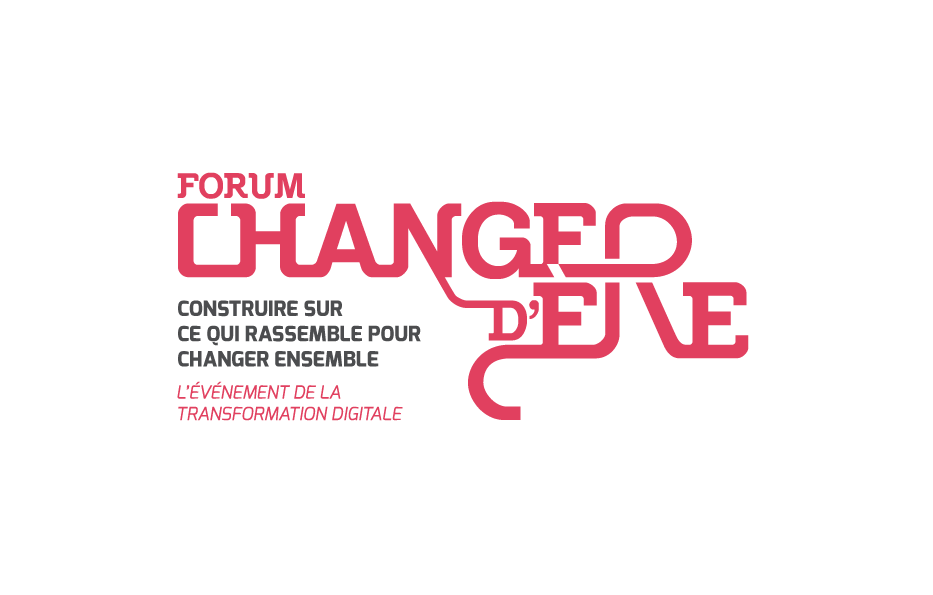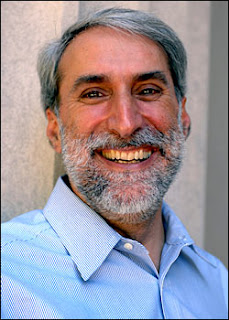Pr Nocera’s research has helped develop a catalyst for the reduction of water into ambient oxygen using cobalt salts and phosphate. He is a member of the National Academy of Sciences USA since 2009 and has received (among other distinctions) the « MIT School of Science Prize for Excellence in Undergraduate Teaching » (2005) and the American Chemical Society Award in Inorganic Chemistry (2009). Biography
Located in Cambridge, MA, Sun Catalytix is an energy storage and renewable fuels technology company founded to commercialize groundbreaking science from the research lab of Professor Daniel Nocera at MIT. With Nature as our inspiration, we seek to combine sunlight and water to provide affordable, highly distributed renewable energy.
Véronique Anger: Do you think you have a chance to win the next Nobel Prize in Chemistry?
Daniel Nocera: Me? … Oh no! I do not really worry about that, because the real prize that would be meaningful to me is to be successful in helping poor people to get energy. Science does not deal with the poor and that is what really matters to me: make science work for the poor.
VA: Your scientific discourse is quite unusual. Why are you so involved in helping the poor, are you an altruist?
DN: It’s selfish. Most people think that I am a nice person and I want to help poor and actually, poor people are helping me. In France, in Europe, as elsewhere in America we find it difficult to embrace a new technology slowly because you’ve invested in a lot of other energy technologies. It is difficult to replace for both economic and political reasons. We have already invested too much in these technologies. The poor people don’t have anything, so they can adopt things more quickly and can teach the world how to be. So, I only say that I don’t help poor people, poor people help me! They can even help the world, show the world how to work. The other reason is what I just said: they don’t have an energy infrastructure so it’s easy to penetrate to get into the market because I’m not battling a one established market. You do not have to fight against the oil or nuclear power lobbies to establish yourself on the energy market.
It is like when the snow falls, it is pure, there is no prints in it yet, but when you start walking on it, there is a path, and then all of a sudden people start following the same path. There is no « legacy » which forces the poor people to follow in everybody’s footsteps… I want to show the path of « solar energy » for the future.
VA: Do you think solar energy will be the main energy used in the future?
DN: I think solar energy is the energy of the future. I really do, but photovoltaic energy is not sufficient, simply because the Photovoltaic only works when the sun shines. You need an efficient storage technology to be able to use solar power whenever you need energy, that is to say, even without sunshine. I do not even want to use photovoltaic because the artificial leaf is integrated directly with the photovoltaic so I do not even need photovoltaic cells anymore. I am sure that solar energy will pave the way in the end, and you know why? Because solar energy and photosynthesis began more than 2 billion years ago. Humans have tried something different in the last 150 years, so we are just going to go back to what worked for two billion years, because the hundred year fossil fuel is not working so well.
VA: What do you think of President Obama’s decision to invest $ 200 billion in a smart grid across the United States?
DN: That bothers me, and that is what I am trying to say. Mr. Obama wants to invest in a smart grid because America has already invested a lot of resources in the electricity distribution networks. But you know that this solution is very dangerous. The smart grid is not a secure system and it is possible to hack into computers, and bring down computer networks and power distribution etc…So if you want to ensure energy security and distribute electricity in every home, you need to install your own power station, America does not need a smart grid for that. So I would prefer that we do not have smart grid, if we opt for this solution nonetheless, I would like it to be a really « smart » and “safe” network. However, solar and other renewable energies could not be grafted onto the existing infrastructure as it is too unstable. If the smart grid was really intelligent, the energy of the future would be solar.
VA: I believe Mr. Tata; the Indian billionaire owner of Tata Motor is very interested in your project. Has he invested in your research? How long do you think it will take to commercialize your technology?
DN: I do not speak in the name of Mr. Tata, who runs a large conglomerate, but you certainly saw what he said in that Economist article : we really have to start paying attention to the rising middle class of the world. We share the same vision. Mr. Tata also shares my vision that sunlight plus water is simple and that is the way of the future. The way to provide sustainable and affordable energy to the poor.
Mr. Tata has committed to invest in the construction of a small power plant that will use our solution. For now, the « artificial leaf» technology is still experimental. Fossil fuel is still cheap; it is thus difficult to penetrate the market. In any case, I work hard for that! I try to inspire the scientific community around the world so that it will work hard too, and it is happening quickly. I hope that commercial production will be possible in 4-5 years.
VA: Will you present the « artificial leaf » technology everywhere in the world?
DN: Yes, everywhere. I want to share my work with scientists around the world. I feel like I am almost a “preacher”. I want people to get up in the morning and think in different way, about how to do science.
VA: What did you think of the public who attended your conference this morning at the CNAM?
DN: I am glad we had this conference. I was really very impressed that some of the people I met in the audience were people from the nuclear industry… That sends to me a really good message about France that you would have people like that coming to a conference like this looking to the future. I think that is a good sign for your country. Your scientists demonstrated their curiosity by listening to my presentation and talking to me afterward. They keep their eyes and their mind wide open to find out what are the newest things new science happening.
It’s always good to listen to other people. Martha Heitzmann[4] the director for Areva Research and Innovation Department even came to visit me. I feel very positive about the future, I think the world is moving very quickly, as quickly as it can move, but I can move quicker with the poor that I can with this world…
[4] Martha Heitzmann has left the direction of the Air Liquide Group Research and Development to join Areva, in March 2011 as Director of Research and Innovation. She is also a member of the Boards of Directors of the CNRS, CEA and AREVA Med and member of the Scientific and Ethics committee.
By Véronique Anger-de Friberg (October 14, 2011)



